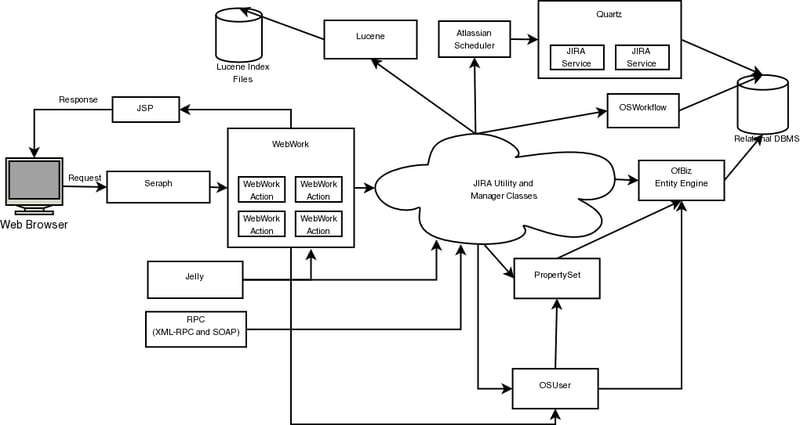Hey Dev.to community, Mr. Rahul here! Today, we're delving into the robust and intricate architecture of Atlassian JIRA. If you're a developer who’s ever been curious about what powers this widely-used project management tool, buckle up for an insightful journey.
Why Understanding JIRA’s Architecture Matters
In our constantly evolving tech landscape, understanding the architecture of complex systems like JIRA is more than academic curiosity—it's about grasping best practices, scalability, and robust design. Whether you're building enterprise software or just a JIRA enthusiast, there's a wealth of knowledge to be gained here.
Prerequisites: What You Need to Know
Before we dive in, a little housekeeping: familiarity with Java and basic concepts of web applications will be super helpful. And, if you've ever used JIRA or any project management software, you're already a step ahead!
The Heart of JIRA: Core Architectural Concepts
JIRA, at its core, is a web application built using Java. It leverages a variety of frameworks and technologies, each contributing to its powerhouse status.
The Framework: PICO for Dependency Injection
JIRA uses PICO, a lightweight container for dependency injection. This allows JIRA to manage its components effectively, ensuring that dependencies are cleanly defined and easily managed.
// Example of a PICO container
PicoContainer pico = new DefaultPicoContainer();
pico.addComponent(MyComponent.class);
MyComponent myComponent = pico.getComponent(MyComponent.class);
Persistence Layer: OFBiz Entity Engine
Atlassian uses the Apache OFBiz Entity Engine for its persistence layer. It provides a robust framework for database operations, transaction management, and more.
Plugin System: Extending JIRA’s Capabilities
One of JIRA's standout features is its flexible plugin system, allowing third-party extensions and integrations. It's a dynamic OSGi-based system that lets you add new features without modifying the core codebase.
Webwork: Powering the Web Interface
The web interface of JIRA is powered by Webwork, a Java-based MVC framework. It's responsible for handling user requests and rendering the appropriate responses.
Pro Tips for Advanced Users
For the seasoned devs, here are some advanced insights:
- Dive into custom plugin development to tailor JIRA to your needs.
- Explore JIRA’s REST APIs for integration with other systems or automations.
Common Pitfalls & Solutions
Here are some common challenges and solutions when working with JIRA:
- Performance Issues: This can often be due to poorly configured instances or heavy customizations. Regular audits and clean-ups can help.
- Plugin Compatibility: Always ensure compatibility with your JIRA version before installing new plugins.
Wrapping Up: Key Takeaways
Understanding JIRA's architecture gives you a window into designing robust, scalable enterprise applications. It's a testament to the power of modular design, a robust plugin system, and the importance of a strong persistence layer.
Further Exploration: Dive Deeper into JIRA
Eager to learn more? Check out these resources:
Stay Connected and Keep Exploring 🌟
Questions? Insights? Connect with me on
- 📩 Email: Drop me a mail
- 🌐 LinkedIn: Connect with Mr. Rahul
- 🏠 Personal Website: Rahul Portfolio
- 🔗 GitHub: Explore my Repos
- 🖋 Medium: Browse my Articles
- 🐦 Twitter: Follow the Journey
- 👨💻 Dev.to: Read my Dev.to Posts
That's all, folks! With this architectural understanding of JIRA, you're well on your way to becoming a more informed and capable developer in the enterprise environment. Let's put this knowledge into action!




















